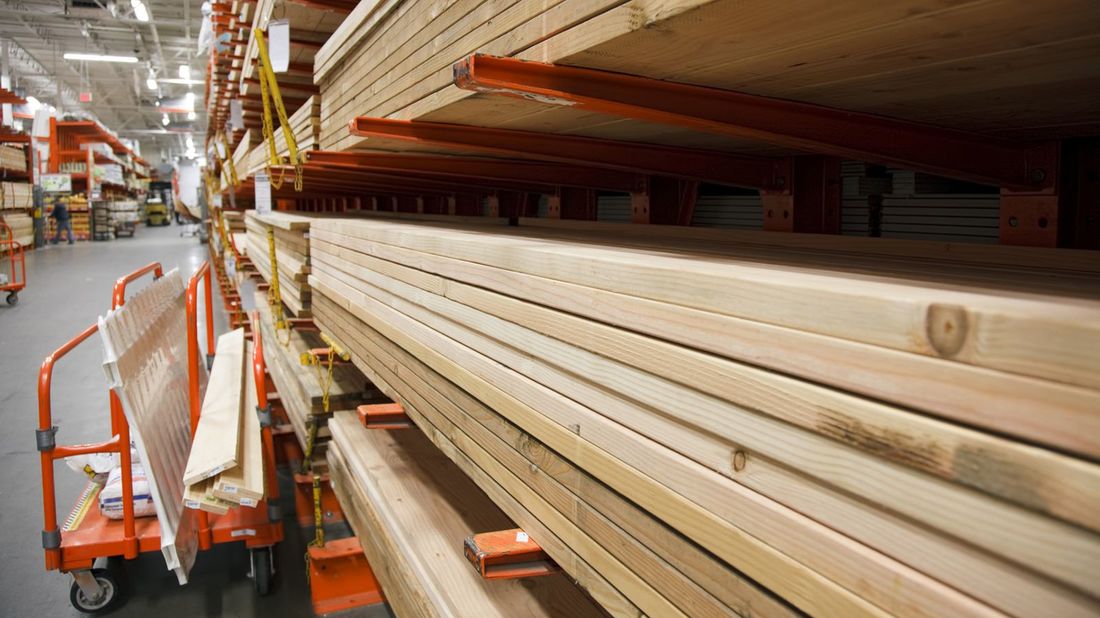|
Why is my 2x4 lumber not 2 inches by 4 inches? Many decades ago, lumber purchased from a sawmill physically matched the common dimensions we use today. So why does that pine or spruce 2x4 from your local lumber yard now come up short? The short answer is modern surfacing and shrinkage. Over time we've come to accept these nominal (approximate) dimensions as standard. But there's still a catch. Shrinkage can be highly variable. This makes it very difficult to manage and regulate dimensional accuracy. Rules for Calculating Dimensions So now you know that 1x3, 2x4 are 4x8 are really just names or nominal dimensions. But... it gets even more complicated. Dimensions change based on the width or the thickness. Here are the general "rules" for calculating softwood dimensions: Nominal vs Actual Dimension Rules
Dimensional Lumber Softwoods (pine, spruce, fir, etc.) are generally known as framing or dimensional lumber. This wood is commonly used for framing walls and floors in our homes and regularly used for building wooded crates and pallets. Since no one likes unexpected dimensional errors, the handy chart below outlines the changes in dimensions you can expect: Dimensional vs Actual Lumber Chart for Dried Softwoods
Regulating Lumber Dimensions
The US Department of Commerce standardized softwood dimensions for green and finished lumber back in 1969. Today, regulating dimensional accuracy in the US falls under the responsibility of the National Institute of Standards and Technology (NIST). The current standards are published by the government in a document titled the American Softwood Lumber Standard (PS 20). The latest version is labeled the Voluntary Product Standard PS 20-15. Why is regulation so difficult? State and local inspectors spot check lumber dimensions at mills and retail locations but determining if softwood boards are within limits is complicated. Here's why:
If you're wondering about hardwoods, thickness measurements are slightly different, but most hardwood widths follow the softwood standard. As an example, a 6 inch hardwood board is actually 5.5". New Testing Procedures Under Review The Office of Weights and Measures (OWM) at the NIST has been working with the American Lumber Standards Committee (ALSC) since 2016 to develop new testing procedures for dimensional accuracy. The next big step in moving the new procedures forward is expected by summer 2018 when the proposal goes to a vote. Have you ever wondered about about the impact of lumber's dimensional accuracy on wooden pallets and crates? Have your own wrong-size lumber story? Talk to me in the comments below. Post by: Kent Longardner, Technical Sales Manager
3 Comments
9/29/2020 03:50:17 pm
this is very interesting because when I have measured wood the length is generally the same however the width differs
Reply
David Marwitz
7/31/2021 11:00:58 pm
Not long ago you could get a sheet of OSB, plywood, or other sheet goods and a 4 X 8 sheet was exactly that. Now they have been shorting the sheet goods by 1/8th width and length. Where does it stop, it's happening with everything including our food. Charge the same or more for less!
Reply
Leave a Reply. |
Call Us: (410) 477-3000
Headquartered in Baltimore since 1918 Nelson Company is a trusted source for pallets & packaging materials.
NelsonCompany.com Is your packaging system costing more than it should? Find out how you can start saving with an analysis from Nelson Technical Center.
Our own web-based software for reverse distribution. Nelson-ART™ manages the entire life-cycle of your packaging assets.
|
Tech CenterThe Nelson Technical Center finds savings. Solutions for the design, supply and recovery of transport packaging.
(443) 649-1049 |
Wood SalesCustom wooden pallets and crates are our specialty. Ask us about wood manufacturing, repair and recycling.
(410) 477-3000 |
|





 RSS Feed
RSS Feed
